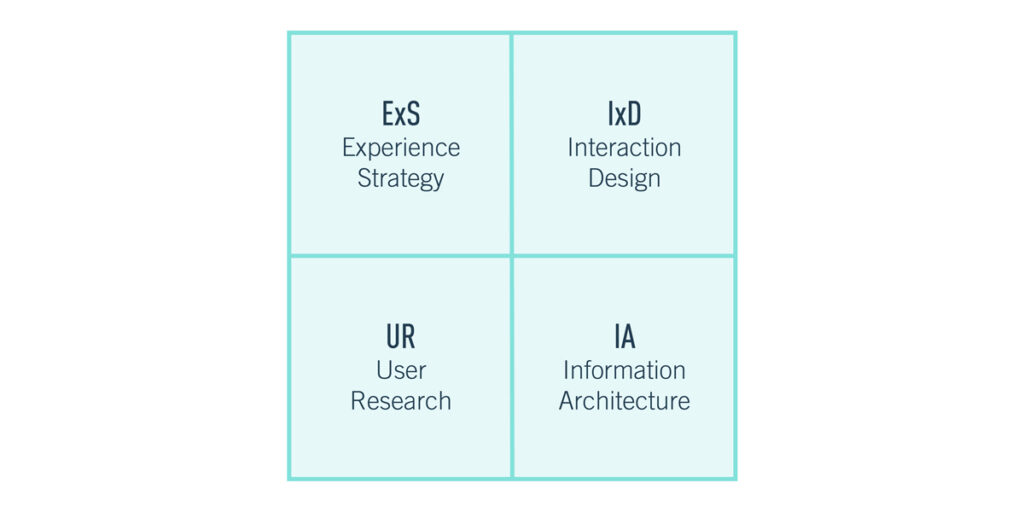Despite the fact that the terms Usability and User Experience (UX) have been defined for a lot of years already, they are still often confused with each other. To understand their meaning even better and be able to distinguish them more clearly, it’s necessary to take a closer look at the definition of these terms.
Usability
According to the ISO 9241-11 standard, usability is defined as
“extent to which a system, product or service can be used by specified users to achieve specified goals with effectiveness, efficiency and satisfaction in a specified context of use
Note 1 to entry: The ‘specified’ users, goals and context of use refer to the particular combination of users, goals and context of use for which usability is being considered.
Note 2 to entry: The word ‘usability’ is also used as a qualifier to refer to the design knowledge, competencies, activities and design attributes that contribute to usability, such as usability expertise, usability professional, usability engineering, usability method, usability evaluation, usability heuristic.”
Usability is often also used interchangeably with ease-of-use, but according to its definition, it is about much more than that. It also deals with the overall satisfaction of the user. Usability also refers to methods for improving the ease of use during the design process.
“Usability is about human behavior. It recognizes that humans are lazy, get emotional, are not interested in putting a lot of effort into, say, getting a credit card and generally prefer things that are easy to do vs. those that are hard to do.”
– David McQuillen
User Experience (UX)
According to the ISO 9241-210 standard, user experience is defined as
“combination of user’s perceptions and responses that result from the use and/or anticipated use of a system, product or service
Note 1 to entry: Users’ perceptions and responses include the users’ emotions, beliefs, preferences, perceptions, comfort, behaviours, and accomplishments that occur before, during and after use.
Note 2 to entry: User experience is a consequence of brand image, presentation, functionality, system performance, interactive behaviour, and assistive capabilities of a system, product or service. It also results from the user’s internal and physical state resulting from prior experiences, attitudes, skills, abilities and personality; and from the context of use.
Note 3 to entry: The term ‘user experience’ can also be used to refer to competence or processes such as user experience professional, user experience design, user experience method, user experience evaluation, user experience research, user experience department.
Note 4 to entry: Human-centred design can only manage those aspects of user experience that result from designed aspects of the interactive system.”

Because this may be hard to understand, Dan Norman and Jakob Nielsen, the inventors of the term User Experience, also have an easier explanation about what UX is about.
“No product is an island. A product is more than the product. It is a cohesive, integrated set of experiences. Think through all of the stages of a product or service – from initial intentions through final reflections, from first usage to help, service, and maintenance. Make them all work together seamlessly.”
– Dan Norman
“User experience encompasses all aspects of the end-user’s interaction with the company, its services, and its products.”
– Nielsen Norman Group
When talking about a website, for example, usability is to make the website easy to use and help the users accomplish their goals efficiently. User Experience (UX) aims to make the user happy before, while, and after using the website. Therefore, User Experience Design deals with creating products that provide meaningful experiences to users.
Disciplines of UX
There are a lot of different models out there that try to explain the different disciplines of User Experience (UX) and how they are connected to each other. Since all of them do include similar disciplines and topics they are all relevant and everybody has to find his/her preferred model. The most popular models are:
The UX Intersection

The Definition of User Experience

Mapping the Disciplines of User Experience Design

The Quadrant Model

The seven core disciplines of User Experience

Qualities of UX
But you cannot only divide User Experience into different disciplines. Peter Morville explained the different qualities of User Experience with his honeycomb created in 2004.

As you can see here, usability is just one of the qualities of the user experience – but a really important one.
The Importance of X (Experience Design)
The letter x normally represents a variable in math that needs to be solved. If we are talking about a business the x usually stands for the experience we want our customers to have. This concept of delivering outstanding experiences to customers is not new. B. Joseph Pine II and James H. Gilmore were already talking about “The Experience Economy” in an article on Harvard Business Review back in 1998.
But according to recent studies, this concept is getting more and more attention. According to recent studies, 3 out of 4 customers say that their experience is crucial for their purchasing decision. Nearly half of them are even willing to pay more for products that deliver a great experience.
“Good experiences grab customers, bad experiences push customers away”
– Brians Solis, 2015
Resources
Books
X: the experience when business meets design
Brian Solis
2015
User Experience is Brand Experience, The Psychology Behind Successful Digital Products and Services
Felix van den Sand, Anna-Katharina Frison, Pamela Zotz, Andrea Riener, Katharina Holl
2020
Articles
The Elements of Successful UX Design, Best Practises for Meaningful Products
UXPin
2015
Norms
DIN EN ISO 9241-11
DIN EN ISO 9241-210
Web
https://www.nngroup.com/articles/usability-101-introduction-to-usability/
https://www.interaction-design.org/literature/article/an-introduction-to-usability
https://usabilitygeek.com/the-difference-between-usability-and-user-experience/
https://www.interaction-design.org/literature/topics/ux-design
